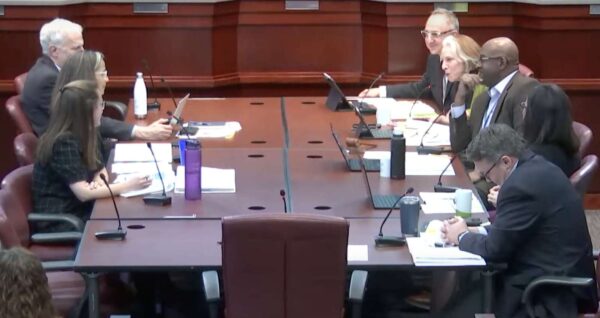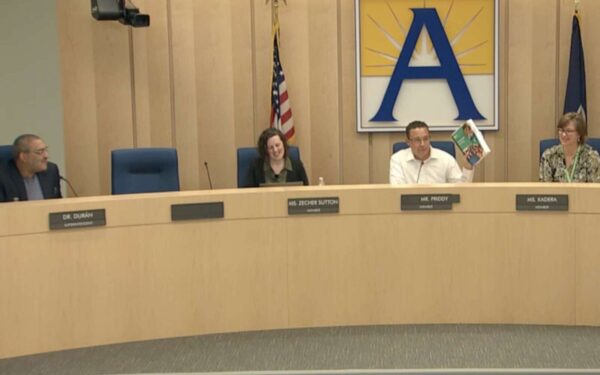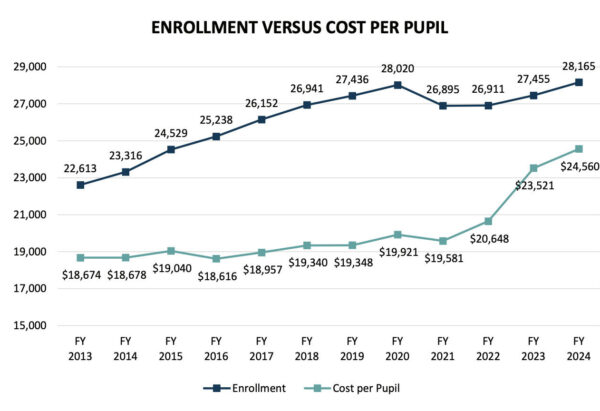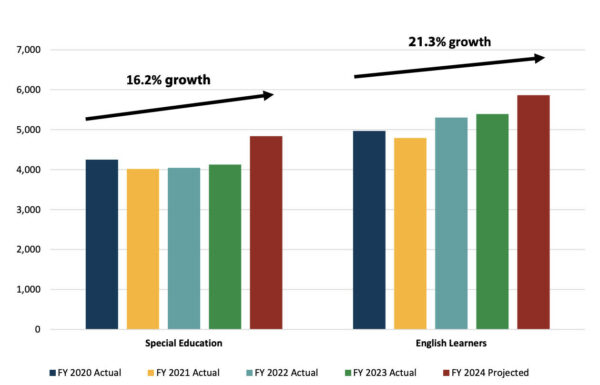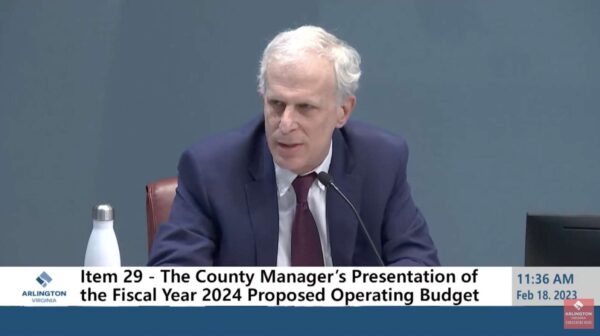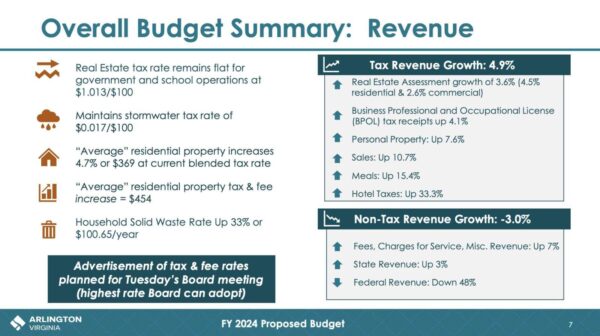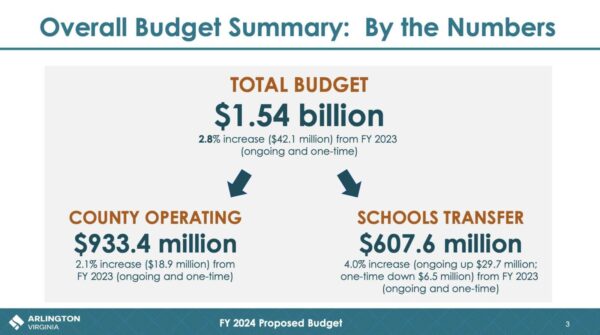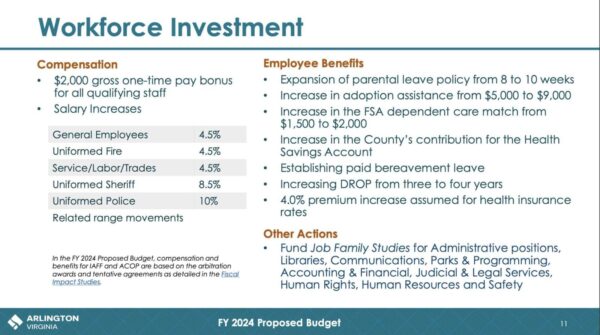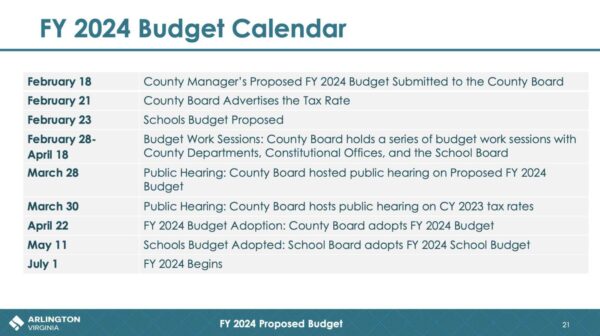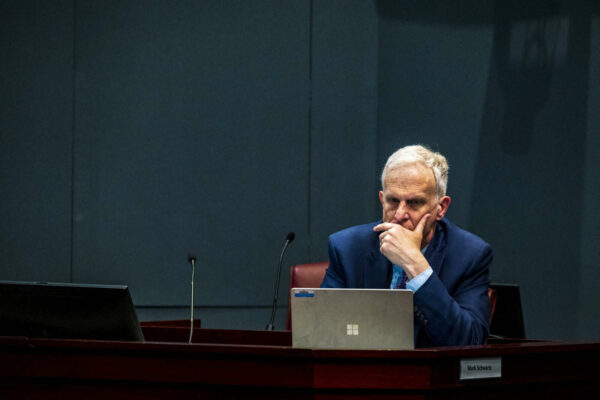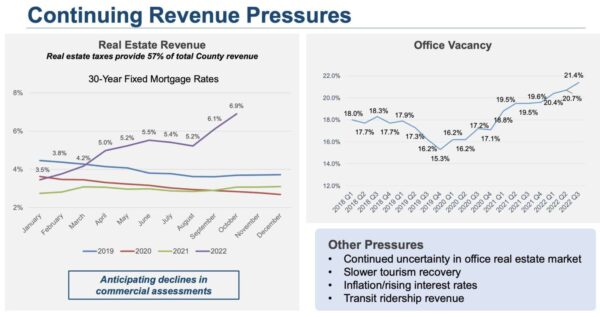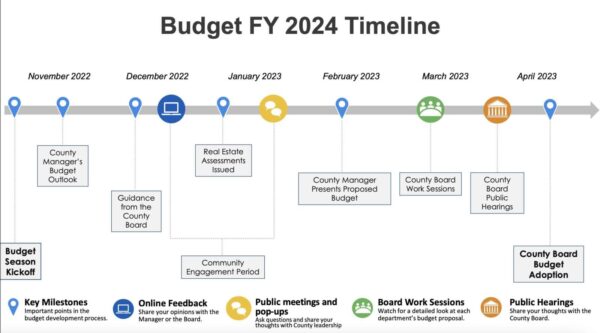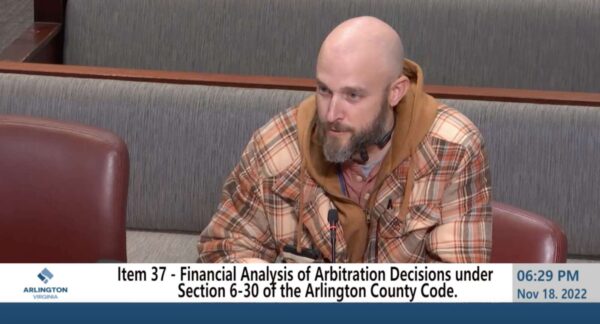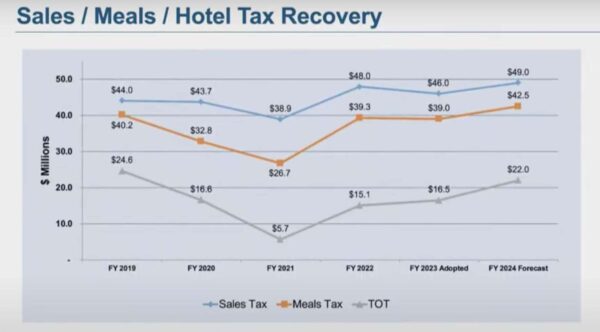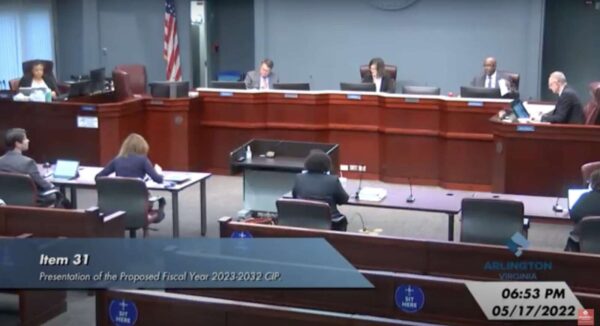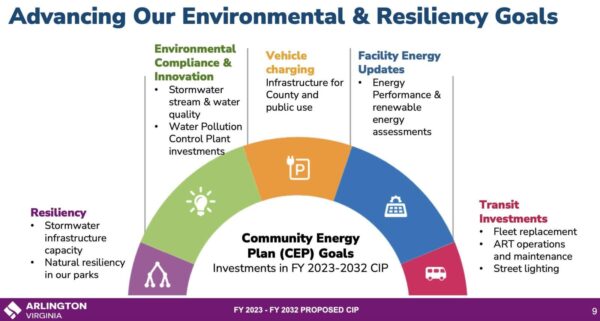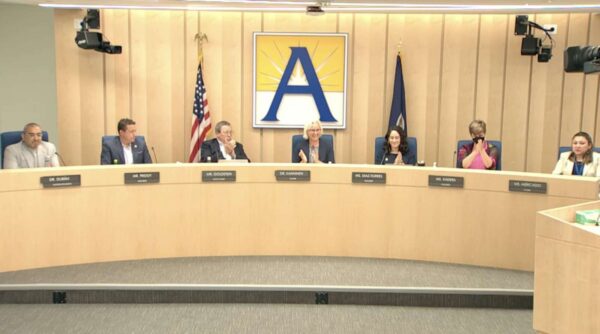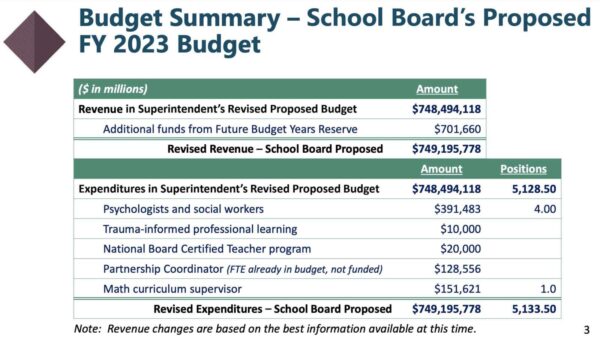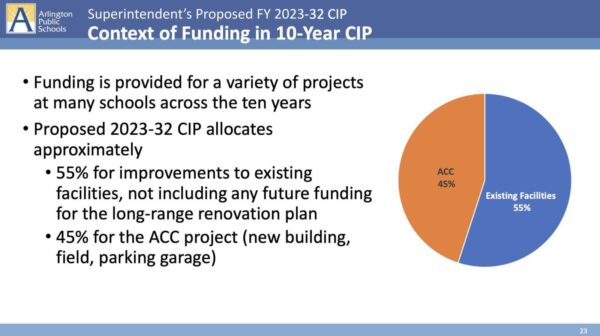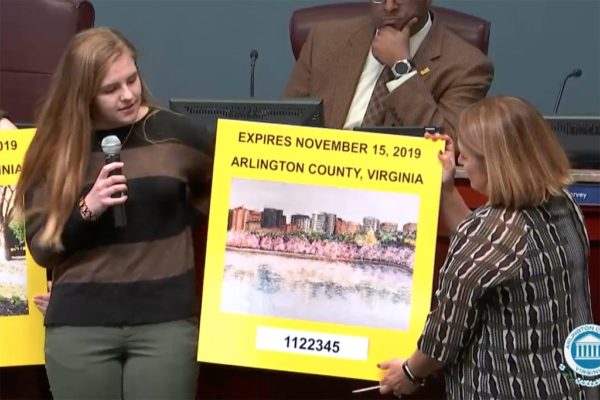
Public safety in Arlington County is poised to be increasingly automated and unmanned, with more traffic enforcement cameras and drones potentially coming soon.
The updates came during a work session on County Manager Mark Schwartz’s proposed budget, attended by County Board members and heads of public safety departments yesterday (Thursday).
Installing new speed cameras and adding more red-light cameras are part of the county’s Vision Zero initiative to reduce serious injury and fatal crashes, as well as a recommended way to reduce potentially adverse interactions between officers and civilians during traffic stops.
Cameras and drones could also help the Arlington County Police Department work more efficiently with fewer officers, as ACPD has had to scale back services amid ongoing challenges with recruiting and retaining officers.
More than a year ago, the County Board approved the installation of speed cameras in school and work areas to reduce speed-related crashes in these areas as part of the Vision Zero campaign to eliminate traffic fatalities and injuries. Now, according to Police Chief Andy Penn, a contract with a speed camera vendor could be ready this spring.
Last fall, the county told ARLnow that there would be more signs of progress, including camera installation and community messaging, once a contract is finalized this spring. Penn told the County Board yesterday that a request for proposal for both speed cameras and more red-light cameras will close next week.
“My hope is that we’ll have a contract for both of those in the next couple of months,” Penn said.
Meanwhile, the police department is working with the Virginia Dept. of Transportation to expand locations with red-light cameras, according to Penn.
“We’re almost at the finish line with VDOT on the PhotoRED expansions, there’s a couple intersections… we should be there soon,” he said.
There are nine intersections that currently use PhotoRED cameras, according to the county’s website. These intersections are located along major corridors including Columbia Pike, Route 1, Glebe Road and Langston Blvd.
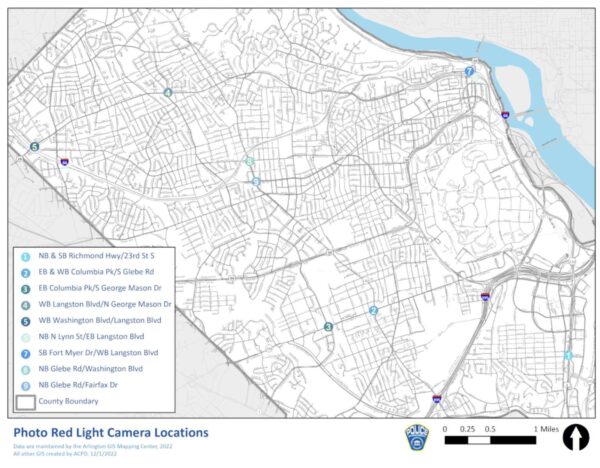
Arlington is also considering deploying drones, which could be a safety tool for both police and fire departments. Penn and Fire Chief Dave Povlitz told the Board they are focused on improving employee safety and wellbeing, which could bolster staffing levels.
“While we’re on equipment, drones? Are we thinking about drones?” asked Board Vice-Chair Libby Garvey. “It’d be a lot safer to send a drone in than a person into a burning building.”
After working with other jurisdictions in the region and conducting a survey, a comprehensive proposal on drones could be ready for Board review in “the next couple of months,” according to County Manager Mark Schwartz.
“They are fantastic additions to any fleet,” he said. “We absolutely would, in many cases, prefer — not just for fire but police and also for our building inspections — to have the ability to have drones.”
Police may already be using drones locally in some cases. One could be seen flying near the former Key Bridge Marriott in Rosslyn this morning as part of a large public safety agency presence at the aging building, which the county condemned amid the continued presence of squatters.
Two hurdles to greater drone use could be privacy and flight regulations governing drones in the region, Schwartz said.
“We want to make sure we address the privacy concerns, which I think have been successfully handled in other jurisdictions,” he said.
Unmanned aircraft flights, including drones, are heavily restricted within a 30-mile radius of Reagan National Airport, according to rules the Federal Aviation Administration put in place after 9/11. Drones need FAA authorization and have to operate under certain restrictions.


